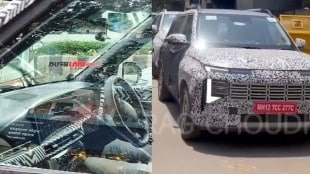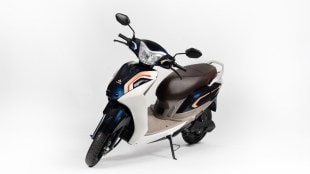The Indian commercial vehicle (CV) industry grew by about 70% from FY15 to FY19, and then contracted 40% in FY20 due to new axle weight regulations, reduced freight demand, BS-6 impact, retail finance constraints, etc. “Because of a lost quarter owing to Covid-19 this year, the industry may further contract by 15-20% this fiscal, says Kamal Bali, president & managing director, Volvo Group India—the CV major. “Thereafter, it should witness a healthy growth of about 40% next year, even if it may be on a lower base,” he adds, in an interview with FE’s Vikram Chaudhary.
CV registrations tend to follow GDP growth. With GDP growth still low, CV sales may not see positive growth for quite some time…
There is indeed a fairly close correlation between the CV industry and GDP. So, even as the CV industry is yet to beat last year’s year-on-year numbers, it is showing substantial growth month-on-month. When it comes to high-performing Volvo trucks, we have gained pace—our numbers in the September 2020 to March 2021 period are expected to be better than the same period last year, thanks to a substantial rise in activity levels around mining and heavy construction.
To put it in perspective, the CV industry grew by about 70% from FY15 to FY19, and then contracted 40% in FY20 due to new axle weight regulations, reduced freight demand, BS-6 deadline, retail finance constraints, etc. Because of a lost quarter owing to Covid-19 this year, I expect the industry to further contract by 15-20% this fiscal; thereafter, it should witness a healthy growth of about 40% next year, even if it may be on a lower base. There also exists a pent-up demand with regard to replacement market.
But with the renewed focus on manufacturing, can the CV sales turnaround happen earlier than anticipated?
That will help, but there are many more segments the CV industry caters to—core industries, consumer durables, perishables, agriculture, retail and e-commerce, among others. Of these, e-commerce and agriculture are performing well. We also see the PMI index is rising (at 58.9 in October 2020, it is the highest in a decade) and should witness improved performance in the months to come.
What about the bus segment?
It may take some time to recover. Also, considering social distancing norms and that a large number of citizens depend upon public transport, it’s time for states to create capacity and make public transport more efficient and of better quality. It’ll pay back in the long run as we have low penetration of buses in our cities.
How can the vehicle scrappage policy support the CV industry?
It can create a new demand segment for the CV industry. However, more important than demand, the scrappage policy will help deliver a far better environment performance because a majority of vehicles on the road today are BS-4 and replacing these with BS-6 will be a win-win for environment and economic performance. Also, there will be ‘fitter’ and hence safer vehicles on the road. If we scrap trucks older than 15 years, it could provide an additional volume of about 2 lakh units.
Which part of a year is the peak sales season for CVs?
Typically, CV sales pick up post-monsoon and as we enter the festive season (starting September).
Most CV makers have launched connected trucks of late…
Connected vehicles have a strong potential when it comes to traffic management, site optimisation, fleet management, proactive service support, driver coaching, tracking, safety and security. All Volvo vehicles today are sold ‘telematics-ready’. In the longer run, this is important when it comes to futuristic concepts such as automated vehicles, road trains or platooning.
The government has introduced the AIS 140 regulations that require all passenger vehicles to include connectivity with respect to tracking and emergency alert. Earlier, city buses sold were mandated to include on-board telematics systems, while some state corporations have been implementing backend connectivity systems to manage their fleets.
Are there examples, from other countries, of the CV industry turning around after a recession?
There is a clear dependency between GDP and transport demand. Growth, especially in manufacturing, core sectors and agriculture, drives transportation needs. But one cannot say that it’s the same in all markets and all times. For one, there is a difference in the percentage of GDP for which transportation stands for. In developed markets it could be 7-8% GDP, while in developing economies it could be up to 15%; this would make the responses different. Further, there is an impact through regulations, technology, penetration levels & replacement market, changing logistics framework and that could matter even more in a growing market like India. For instance, last year, besides other drivers, the new axle regulations and BS-6 had an impact on the market. In the long run, all these measures will pay back and improve transport efficiency and performance.




















